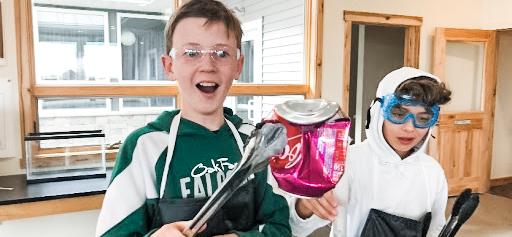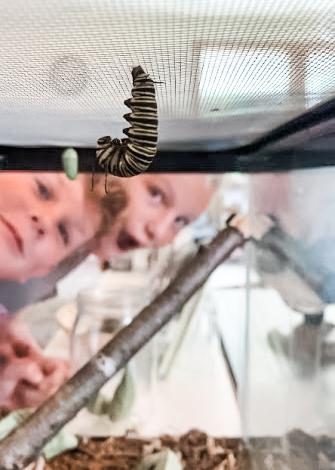
4 minute read
OAK FARM MONTESSORI MAY 2020

Natural Instincts Tracy Reincke, Toddler 2 Teacher

Curiosity is instinctual for children
Children are naturally inquisitive. This curiosity drives a child to focus and persevere, not only now; but in the future as well. Young children learn naturally through observing and exploring the world around them. In the Toddler environment the child’s inquisitiveness is always at work; whether it is figuring out how to master a new work, observing other children, or exploring the world around them. The joy on their faces as they discover new revelations is profound and genuine. In our current time of upheaval and uncertainty, small children have questions too, “Why can’t we go see grandma?” “Can I go to the store with you?” These probing questions are all related to them learning about and from the world around them. The more children ask questions, explore, invent, create, or observe, the more they understand and feel safe in the environment in which they inhabit. Now, during this time of at-home learning, is a great time to get outside; explore nature and encourage the inquisitive mind of your young child.

Divergent Thinking Nancy Bradtmiller, Upper 2 Teacher

Experiencing nature leads to learning opportunities
In Upper Elementary, our desire is not to provide all the answers for our students, but to ignite their curiosity. We do not see our students as passive learners, like empty vessels into which we pour knowledge, but as active participants in their learning. We recognize Upper Elementary students have a thirst to understand the world in which they live, as well as their role in it. They want to comprehend the cause and effect of things. As their guides, we want to feed this hunger by offering them the chance to explore. Montessori said, “The task of teaching becomes easy, since we do not need to choose what we shall teach, but should place all before him for the satisfaction of his mental appetite”. At the beginning of the year, Timelines and Great Lessons introduce Upper’s Culture lessons; they intertwine mystery with facts and laws of science. As Upper students listen to the stories and examine the timelines, their imagination aids their understanding. To say the ocean is vast does not compare to the image portrayed when we explain that the sea could hold a mountain turned upside down. After the Great Lessons, we encourage students to pursue their interests. With their curiosity sparked, our students find pleasure in learning the details. According to Larry Schaefer, “Montessori is inspiration; not information”, Upper teachers hope to touch the hearts and minds of our students. Divergent thinking is the ability to see lots of possible answers to a question and different ways to interpret a question; this starts with our students being inquisitive and the result being creative thinkers. Students choose who they want to collaborate with in small groups on projects. This is particularly beneficial for quieter and more reflective thinkers who desire a safe and less competitive environment to voice their thoughts and opinions. The Upper classrooms are prepared with the students’ interests in mind. Books and attractive, sequentially placed, materials that invite inquiry and further research are the norm. As


their guides, Upper teachers seek to know our students’ strengths, weaknesses, interests, and aversions. We do this through repeated observations and building relationships. The work cycle provides opportunity to concentrate on the choices they have made. Science class with Katie also supports Upper students’ inquisitive nature. Students explore concepts in Chemistry, Physics, Electricity and Magnetism with hands-on activities and experiments. As a culminating activity, students are asked to demonstrate their understanding of the Scientific Method by performing their own experiment. Students choose a question that interests them and then develop an experiment to test it. Upper students seek wider boundaries that extend outside of the classroom; giving them experiences to form new ideas. Phenology brings lessons in Biology and Earth Science to life and gives students the chance to engage with the outdoors. Phenology, also referred to as “nature’s calendar”, has students track the weather making note of the day’s temperature, precipitation and amount of daylight while observing how these affect biological events such as leaves changing color, birds migrating or plants emerging. As students sit at their chosen spot, they make entries in their journals describing what they see, smell, or hear; adding further details with illustrations. Seeing a snake sunning itself in February or looking for salamander eggs in vernal ponds initiates a child’s desire to know more, and new intellectual interests arise.

